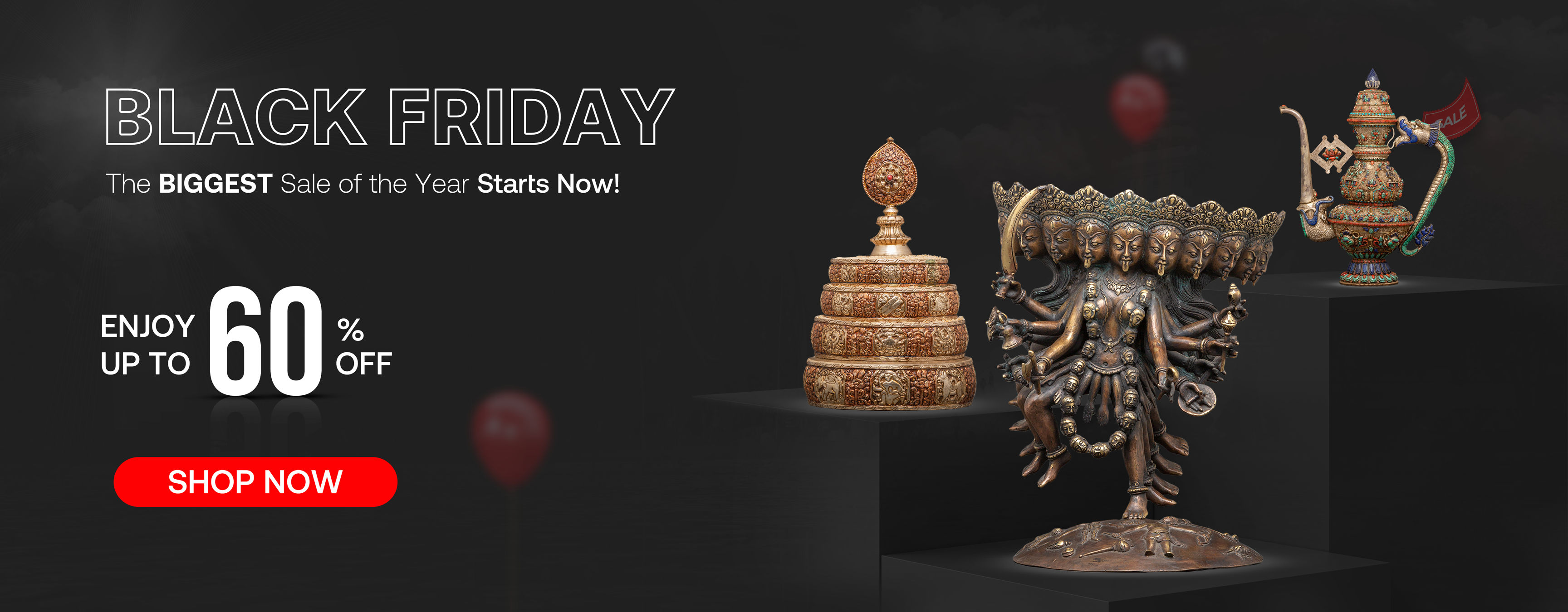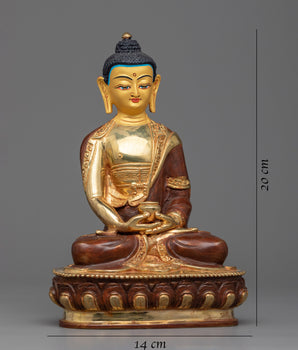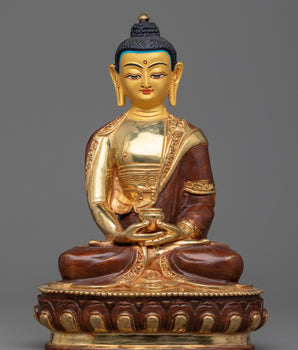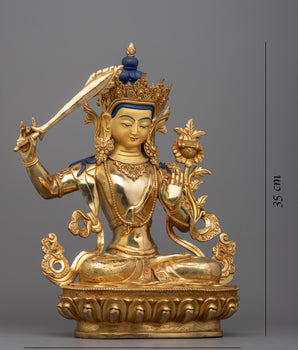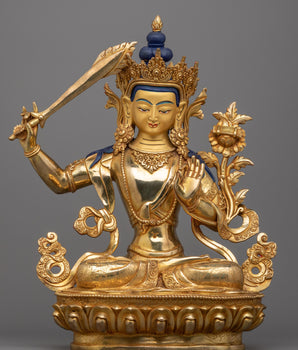Jambhala and Namtoshe are Guardians of Fortune
White Jambhala and Namtoshe are its most powerful deities, who unite compassionate and prosperous qualities. As part of the vast Buddhist cosmic system, deities adopt symbolic meanings which link them to different human spiritual practices and all-encompassing life experiences. Two sacred entities associated with wealth and protection, White Jambhala alongside Namtoshe, appear most often when discussing these divine concepts. The divine figures White Jambhala and Namtoshe receive reverence because of their fortune associations, yet many believers confuse them into one identical deity.
The mistaking of the two figures stems from their similar characteristics since each has multiple occasions where they hold a mongoose that spits jewels while participating in rituals for well-being and wealth, and both have important roles in Tibetan Buddhism. Jambhala and Namtoshe maintain a deceptive unified image while their origin stories remain separate from each other, as well as their pictorial content and spiritual significance.
The peaceful deity White Jambhala represents an personification of Bodhisattva of Compassion Avalokiteśvara (Chenrezig). White Jambhala directs his spiritual mission towards transforming poverty into abundance by encouraging people to practice generosity and compassionate deeds.
Among the Four Heavenly Kings Namtoshe fulfills a protector role as a guardian king while demonstrating fierce nature. As a guardian king Namtoshe possesses both power and authority to protect the Dharma and ensure balance in life although his followers generally call upon him for wealth protection instead of helping those who are poor.
Who is White Jambhala? The Bodhisattva of Wealth

White Jambhala, also known as Dzambhala Karpo, represents his deity form, which associates him with wealth, prosperity, and suffering relief. White Jambhala manifests as an incarnation of Avalokiteśvara (Chenrezig) while he emerges as an embodiment from his right eye. All other manifestations uphold autonomous status beyond their association with Avalokiteshvara. His compassionate nature and his role to alleviate spiritual-material obstacles, suffering from poverty and sickness, and purify nonvirtuous karmic actions through this manifestation. Through his crown and armor, he gains dominance over people while fighting financial challenges with great determination. His body contains numerous jewel holes to represent this wealth. Through the expression of his diamonds, the mongoose figure demonstrates his dominance over greed and infinite money-making abilities, serving as one of his essential presentation elements. His numerous body jewel holes serve as symbols that make him materialistic.
The last act performed by devoted followers represents the act of throwing rocks against Avalokiteshvara. The deity Avalokitesvara turns into the wealth deity Jambhala if a rock strikes him while he grants financial assistance to the worshipper. Mythology shows the deity ready to listen to genuine requests because he helps beings find economic freedom following his legendary pledge.
Iconography of White Jambhala
White Jambhala is one of the Five Jambhalas, each representing a different facet of abundance and spiritual attainment. The spiritual aspects of his manifestation focus on obtaining wealth while promoting healing power. People commonly call upon Him to seek wellness for their bodies as well as their emotions, in addition to seeking prosperity.
1. Colour:
- The white colour of his body signifies purity along with clarity, while illustrating his peaceful nature of compassion.
2. Mount:
-
Often depicted sitting atop a dragon that symbolizes his power, fearlessness, and ability to rule elements and worldly obstacles.
3. Left Hand
-
The mongoose (Nakula) held in his left hand turns loose precious jewels, which symbolize an everlasting abundance of wealth and openness.
-
According to mythologies use the mongoose is used to represent conquering greed and showing how one can turn poison into valuable treasures.
4. Right hand
-
A golden sword appears in his hand to remove ignorance, alongside challenges and negative spiritual deeds.
-
A staff and a vase often appear in his hands as he acts as a spiritual leader to control sacred blessings together with his authority.
5. Facial Expression:
-
The deity reveals half wrathful features to show his fierce compassion in spiritual action, which removes hardships and suffering.
6. Crown and Ornaments:
-
A five-skull crown and earrings and necklaces, and flowing silk garments show his possession of the five wisdoms and his celestial being status.
7. Lotus Seat or Cloud Platform:
-
In certain depictions, he sits on top of a lotus flower while floating on clouds to highlight his divine spiritual nature.
8. Aura of Light or Radiance:
-
A halo or aura surrounds him because it stands for both his compassionate glow and his healing power that he uses for others.
Mantra and Practices
People who practice this mantra seek Jambhala's blessings, which bring prosperity together with good health while nullifying bad actions. The ritual called "Dragon-riding White Jambhala Practice" provides a distinct method for discovering treasures which past masters sealed inside Earth elements and underwater locations, and fire-bearing beings and air elements
Devotees who evoke White Jambhala through their rituals use this sacred mantra:
"Om Padma Krodha Arya Jambhala Hridaya Hum Phat"
The Faces in Buddhist Practice

The manifestation of Avalokiteshvara as Jambhala enables him to exercise compassion so he can reduce poverty while fighting pain. He demonstrates compassionate knowledge while expressing an abundant state of mind to support generous actions and sensible wealth distribution aimed at benefiting the community. People of both secular society and monastic orders use Jambhala to gather funds necessary for daily survival and Buddhist spiritual practices. The straightforward approaches used by him help him offer financial and spiritual backing to multiple practice communities. With his assistance, believers learn to purify karma to receive benefits from him, who shows the relationship between spiritual pursuits and material abundance.
Who is Namtoshe? The Guardian King of the North

Among the Four Heavenly Kings, Namtoshe goes by the Buddhist name Vaiśravaṇa as the King of the North realm. The traditions of Hinduism and Buddhism consider him to be both a protector deity and a protector of riches. He offers a divine presence that stands apart from the benevolent and prosperous gods because his power declares protection. According to traditional beliefs, he appears as a military leader when depicted wearing war armor while brandishing items like victory flags and spears, along with a mongoose that drops a precious stones, which symbolize his generosity. Despite his role as a guardian of wealth, Namtoshe primarily protects spiritual practices by keeping order and eliminating obstacles to ensure unhindered development of spiritual practice.
Namtoshe originated as a Hindu as well as a Buddhist deity, Kubera, who ruled over wealth during the development of mythology. In Buddhist tradition, he extends his duties beyond ritual protections to provide spiritual sanctuary, thus establishing a vital position throughout monastic defense systems as well as temple sculptures. The opening discussion positions him beyond his role as heavenly conductor of luck while revealing him as a significant emblem of righteousness and sacred safety who demonstrates societal requirements towards divine progress.
Iconography of Namtoshe
Namtoshe serves as both a divinity of affluence and a protector deity, and his artistic representation manifests his authoritarian status on earth, together with his sacred protection. Despite showing attributes of military power together with spiritual generosity and protective strength, Namtoshe stands as one of the most visually dominant figures of Buddhist art.
1. Color:
- The yellow sheen of his body represents royal status and prosperous wealth, together with his position as protector of prosperity and justice.
2. Armor:
- His battle armor shows his protective side and readiness to guard the Dharma. Through his magnificent attire, he displays his strong spiritual power together with self-discipline and fearlessness.
3. Victory Banner:
- A victory banner held in his right hand demonstrates his ability to overcome darkness and ignorance while remaining dedicated to protecting spiritual truths.
4. Jewel-Spitting Mongoose:
- The mongoose, which he carries in his left hand, symbolizes his mastery of greedy desires by freely giving precious jewels that emerge from its mouth.
5. Crown and Jewels:
- The crown and necklace and other jewels of the figure symbolize his threefold mastery over worldly powers combined with supernatural authority.
6. Snow Lion Mount:
- Mounting the snow lion enables him to display fearlessness combined with purity and power. The lion represents two aspects of protection while expressing the wild nature of a mind that has achieved enlightenment.
7. Facial Expression:
- His face displays both composure and authority because his compassionate nature stems from his wise protection while he remains alert.
The Faces in Buddhist Practice

Buddhist practice values Namtoshe as he gives financial blessings, together with protecting spiritual Dharma, strong and protective energies. North King's position belongs to him because numerous individuals contact him regularly to protect them from life's challenges. Namtoshe imagery stands at temple entrances to protect sacred monastic lands. The wealth deity status of the guardian king becomes evident in Buddhism since he breaks financial barriers that hinder spiritual advancement. The Tantric practitioners initiate rituals with Vaishravana to achieve harmony as well as financial advantage alongside religious stability. He demonstrates ethical management of resources and powers by opposing all negative influences and supporting the distribution of resources.
Mantra and Practices
The first step of Namtoshe's practice is to establish a specific purpose regarding protection, stability, and obstacle removal. The deity Namtoshe appears in the form of golden body armor, sitting on a snow lion while emitting bright light and power.
“OM VAISHRAVANA YE SVAHA”
The Mantra is chanted for his divine blessings to protect you by eliminating fear, together with scarcity and negativity. Practice generosity while developing your inner discipline and direct the positive results of this meditation for the benefit of all beings and the preservation of Dharma teachings.
Key differences of Jambhala and Namtoshe
|
Aspect |
White Jambhala |
Namtoshe |
|
Nature |
Manifestation of Avalokitesvara |
King of the North, one of the Four Heavenly Deities |
|
Role |
Purification of poverty; compassionate giving |
Power and wealth guarding |
|
Form & Expression |
Fierce or wrathful form, and showing compassion |
Warrior-like, armored, and protective expression |
|
Represents |
Spiritual wealth, healing, and purification of karma |
Prosperity, protection |
|
Strength |
Overcoming obstacles and Negative Karma |
Protection, abundant and commanding |
|
Posture & Mount |
Symbolizes dynamic power, sitting on a dragon or Lalitasana |
Symbolizes fearlessness, sitting or standing on a snow lion |
|
Attributes |
Mongoose, citron, skull cup, and nectar vase are symbols of prosperity |
Mongoose, lemon, parasol, and victory banner are symbols of protection and wealth |
|
Crown and Dress |
Depicted in princely robe and jeweled |
Wears a warrior crown and armor |
Conclusion
The Buddhist cosmological and devotional experiences feature Namtoshe and Jambhala as divine examples that grant wealth while embracing its meaningful application. The religious symbols and myths of these deities show similar perspectives about leader guardianship through Namtoshe, the alert protective king who embodies good leadership combined with sacred responsibility in his duty as protector. Instead of wealth being detrimental to the Dharma practice, practitioners should maintain virtue and self-discipline to use their fortunes as protective measures.
The merciful heart of Avalokiteshvara brings Jambhala into existence as he bestows prosperity through spiritual guidance. The various Jambhala forms represent different kinds of situations among living beings and provide assistance that treats both material needs and overcomes karmically caused poverty and misery. Through this embodiment Jambhala demonstrates the concept that real generosity creates freedom instead of trade while wealth serves as a connection that does not hinder spiritual development.
These divine figures teach us that Buddhist riches serve mostly as sacred means to offer service and defense, and advance beyond our current state. Audience members learn from Namtoshe, combined with Jambhala's compassionate energy, that physical wealth and spiritual wealth work together harmoniously as companions on the path to wisdom and liberation.





